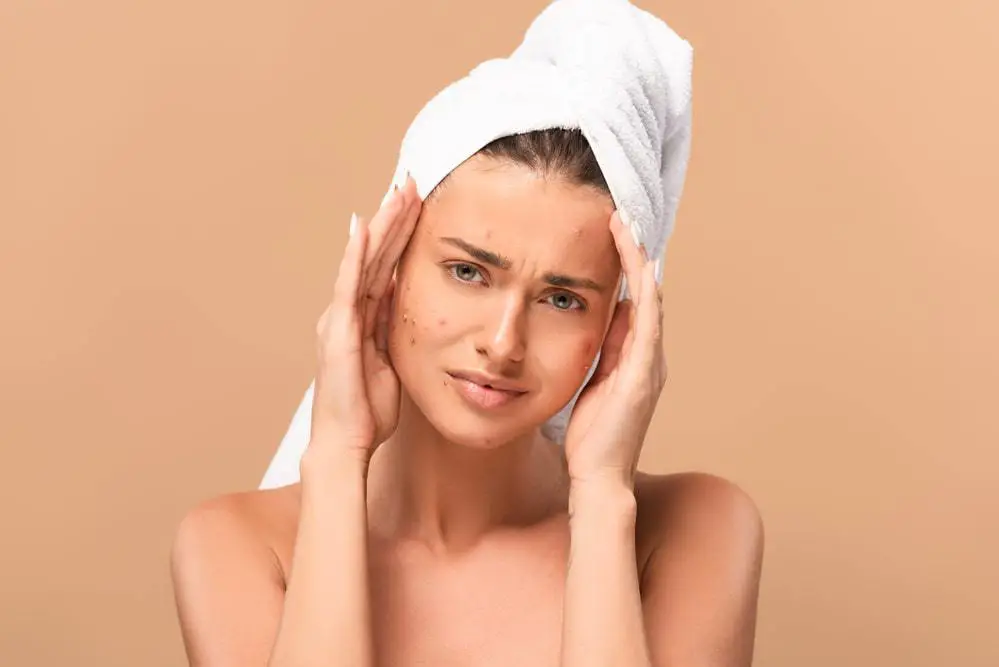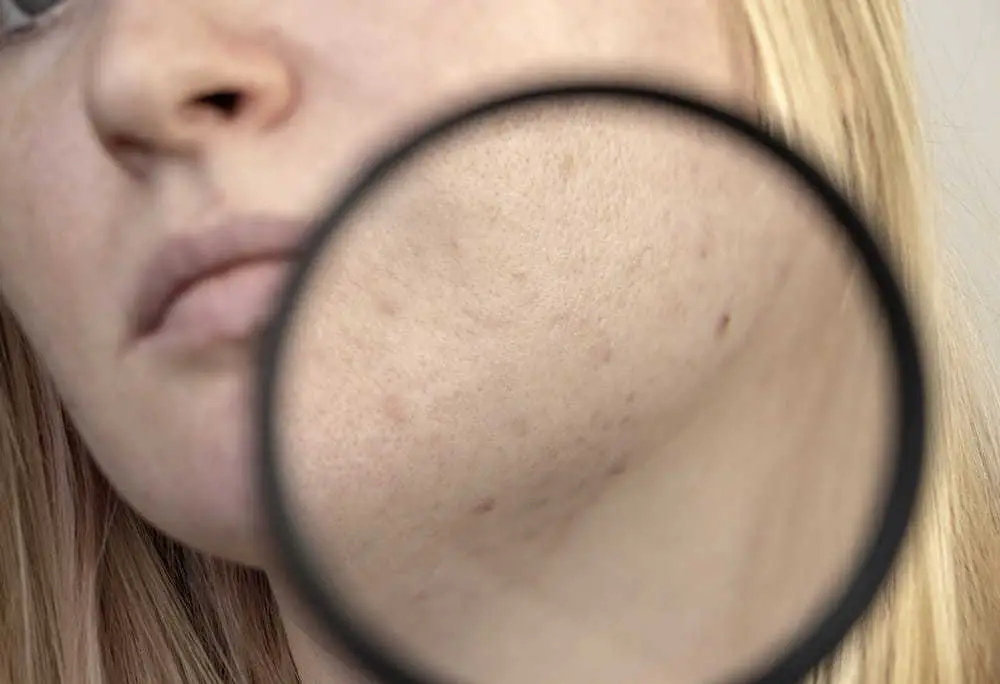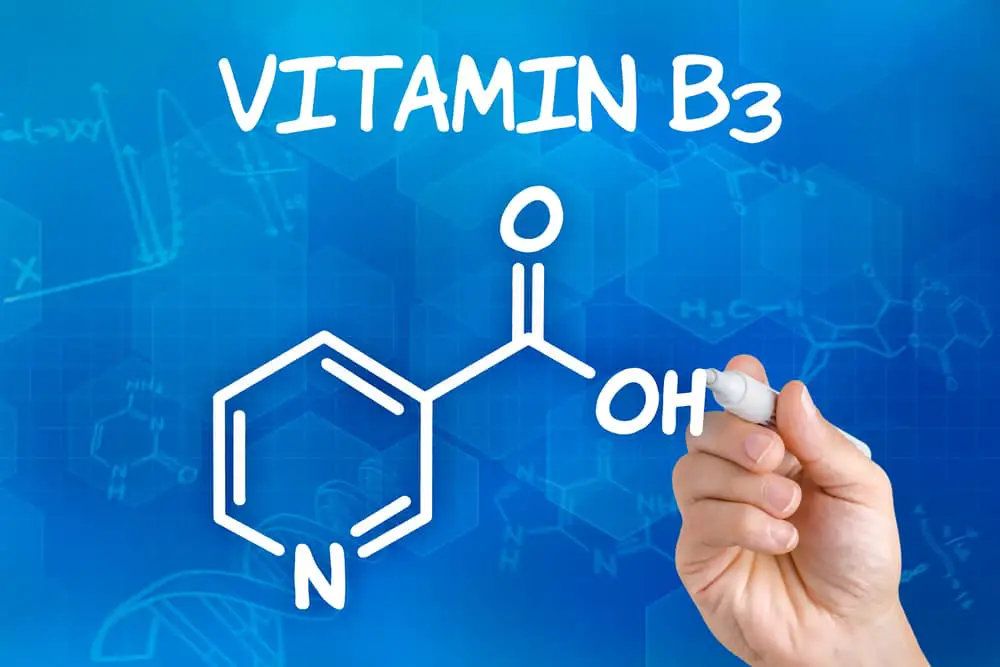Can niacinamide truly cause acne? That is a question we would love to answer, but first, what is the link between acne and niacinamide?
Acne is a skin condition where the hair follicles become clogged with oil and dead skin cells. Niacinamide, on the other hand, is a variant of an essential nutrient- vitamin B-3, and it is sometimes also called nicotinamide, mostly found in many creams and serums.
What Is Niacinamide?
Niacinamide is a form of vitamin B3. It is often used in skincare products for its ability to improve skin tone and texture.
Niacinamide can be found in a variety of products, including serums, moisturizers, and toners. It is also available as a supplement.
Niacinamide is a popular skincare ingredient because it has a variety of benefits for the skin.
Despite its many benefits, some people believe that niacinamide can cause acne. This is because niacinamide can increase sebum production, which can lead to clogged pores and breakouts.
Skin Benefits Of Niacinamide
Niacinamide has a number of benefits for the skin, including:
Reducing The Appearance Of Wrinkles And Fine Lines
Niacinamide can reduce the appearance of wrinkles and fine lines. This is because niacinamide can improve skin elasticity and collagen production.
Reducing The Appearance Of Hyperpigmentation
Niacinamide can reduce the appearance of hyperpigmentation, which is dark spots or patches on the skin. This is because niacinamide can lighten skin tone.
Improving Skin Barrier Function
Niacinamide can improve skin barrier function, which is the skin’s ability to protect itself from environmental stressors. This is important because it can help to prevent damage from pollution and other environmental factors.
Treating Acne
Niacinamide can also be used to treat acne. This is because niacinamide can help to reduce sebum production, which can lead to clogged pores and breakouts.
Can Niacinamide Cause Acne?

Straight answer, Niacinamide, does not cause acne. However, when used in excess, it can irritate the skin and cause blemishes. In this article, we will try to shed more light on this.
We will also try to know the answer to related questions that are frequently asked, such as – Does niacinamide make you break out? Why does niacinamide make me break out? What are the side effects of niacinamide? Is niacinamide good for acne-prone skin?
Niacinamide, a form of vitamin B3, is a prominent ingredient in commercial cosmetic formulations for years. It has recently been popping up in all types of skin care products due to its recognizable and desirable attributes.
Niacinamide, otherwise called nicotinamide, is one of two variants of vitamin B3 found in supplements and skincare products. It is popular because of how it helps in managing acne, hyperpigmentation, and wrinkles.
Evidence also shows that topical application of niacinamide can also increase lipids’ production that helps maintain the skin’s protective barrier, which keeps the skin moist. Due to its anti-inflammatory abilities, it is used in treating inflammatory skin conditions, like acne.
Besides topical formulations, oral niacinamide supplements have shown the ability to reduce inflammation associated with acne, especially when oral antibiotics aren’t an option.
If the doctor says to eat an apple a day, he possibly saw or knew something in that apple that would benefit you and me. And, if a doctor tells you to use niacinamide containing medications to treat your acne, he must know something you don’t. However, something so good can be bad too if you take it in excess.
How much niacinamide is safe for the skin? From what research shows, niacinamide of concentrations of up to 5% shows no side effects.
However, when niacinamide is used in high concentrations, it can lead to skin irritation and redness, mostly due to using too much or the presence of another ingredient or preservatives. It can also lead to an increase in serum histamine levels, thereby causing an allergic reaction.
Is niacinamide safe for sensitive skin? Niacinamide is safer for all skin types and is a safer substitute for retinoids and topical acne medications during pregnancy and breastfeeding. Ordinarily, from research and findings, niacinamide cannot cause acne, instead, it cures it.
Why Does Niacinamide Make Me Break Out?
Most creams come with more than one ingredient in them, intentionally added to achieve an end. Upon adding new products to your skincare routine, there would certainly be issues. Issues like breakouts occur; mind you, a breakout can either be a good or bad one.
Good breakout or purging is an initial acne breakout that occurs when you start a new skincare product. As a result, it causes an increase in skin cell turnover.
On the other hand, bad breakouts occur when a new skincare product you are using doesn’t suit your skin. It could be that a specific ingredient irritates the pores or clogs it to cause blemishes. It could also be a result of an allergic reaction or irritation.
Since niacinamide doesn’t cause an increase in skin cell turnover, then it shouldn’t cause purging. However, it may cause breakouts for several reasons, such as a strong concentration of niacinamide and other ingredients.
Niacinamide has been shown to be effective at concentrations between 4% and 5%, but concentration beyond this may be too intense for some skin types.
Since niacinamide can’t stand alone to make an overall effective skincare product, it is combined with other ingredients. Some of these ingredients can aid and increase skin cell turnover and cause purging. Some may clog pores and thus cause breakouts.
The following can be carried out to ensure safety while that new niacinamide product:
- Carry out a patch test: This simply involves testing a new skincare product on a small patch of skin representing the region you intend to use it on to prevent a reaction. Apply for at least five days consecutively and then go-ahead to use in the absence of any reaction.
- Buy products with 4-5% niacinamide rather than 10% to be on the safer side.
- Observe spacing. Use the product less frequently so that it won’t be too much for the skin to handle.
- Consult your doctor or dermatologist for a prescription of the right niacinamide product for your skin.
Note that if it’s a purge, you’d see an improvement in like six to eight weeks. However, if your skin gets worse after introducing a new product to your skin and stays like that for longer than two months, it’s definitely a breakout. Then, it is advisable to stop using the product.
Is Niacinamide Good For Acne?

Niacinamide offers many benefits for the skin ranging from boosting hydration to fading hyperpigmentation and treating acne when used topically. It also works to protect skin from environmental damage, make more collagen and hyaluronic acid.
It has a number of properties: anti-inflammatory, antibacterial, and sebum reducing properties that are good for treating acne. It also has potent anti-inflammatory properties that decrease skin redness, inhibit the formation of blemishes, and aids skin repair after a pimple heals in people with acne.
Apart from this, it reduces sebum production, thereby reducing the oiliness of the skin. Topical niacinamide helps the skin protective barrier function against infection and stops the proliferation of acne-causing bacteria. It is gentler on all skins compared to acids, retinoids, and benzoyl peroxide.
Plus, it is effective and safe in alleviating mild to moderate acne symptoms and severe acne, especially inflammatory forms. For example, papules and pimples, and lesions become fewer, and the skin texture and appearance are improved over 8-12 weeks.
What Are The Side Effects Of Niacinamide?
The only side effects of topical niacinamide are mild itching, redness, and burning, which are rare and often stop over time as the skin becomes used to the substance.
These are caused by three factors: allergies, the presence of another ingredient, or the concentration of niacinamide. Due to histamine release, high levels of niacinamide can make allergies more severe in people with preexisting skin allergies, as histamine causes allergic symptoms to appear.
However, in the absence of skin allergies, you may experience redness, burning, and itching if you just started using niacinamide products. It may be normal and lessen over time, but if it doesn’t, it may be because you’re using too much or the concentration of niacinamide in the product is too high for your skin type.
It is best to talk to your dermatologist if you notice irritation to clarify the normal transition period with your product and when you might need to consider a different product.
In a situation where purging occurs, it should only last for about six weeks, being the length of time required for the skin to renew itself completely. It is advisable to change the niacinamide product if the purging persists.
Topical niacinamide is generally considered safe for usage and, as such, has little or no side effects. Buy products containing 5% or lower niacinamide concentrations, which has proven safer unless you have preexisting skin allergies. You might need to consult a dermatologist and, if need be, do a patch test.
Can Niacinamide Irritate Skin?
Although niacinamide is very common in many skincare products, it may actually irritate your skin if you fall among the unlucky few. Symptoms of irritation include redness, dryness and itchy, burning skin, or even an allergic reaction.
It is entirely normal for some active products with an acidic pH, e.g., AHAs, BHAs, vitamin C, and retinoids, to make your skin a little irritated. But if you’re not using any and this happens along with breakouts, it’s a bad sign and signifies a reaction.
This can occur if you are; allergic, an ingredient in the product is causing the irritation, or the concentration is too high for your skin. The use of niacinamide in high concentrations (above 5%) can cause skin irritation.
However, this depends on the condition of your skin and your genes. Remove the product from your routine if you experience a stinging feeling. To fight redness, you can try using products spiked with caffeine or ceramide. They work great topically and have no side effects.
While using niacinamide, if your skin becomes red and irritated and doesn’t heal on its own, it is advisable to stop using the product or at best switch to another skincare treatment without niacinamide.
However, if you think that niacinamide may be responsible for your irritation, consult your dermatologist to find out the truth and ask for an appropriate substitute.
Conclusion
Without a doubt, although niacinamide has some underlying side effects, the effects are not universal to everyone. Nonetheless, proper use does not cause acne.
Niacinamide is an essential part of skincare products that aims at ridding every affected person of acne. However, it is advised that you seek medical advice before using niacinamide; it is for your utmost safety.
In this series:


